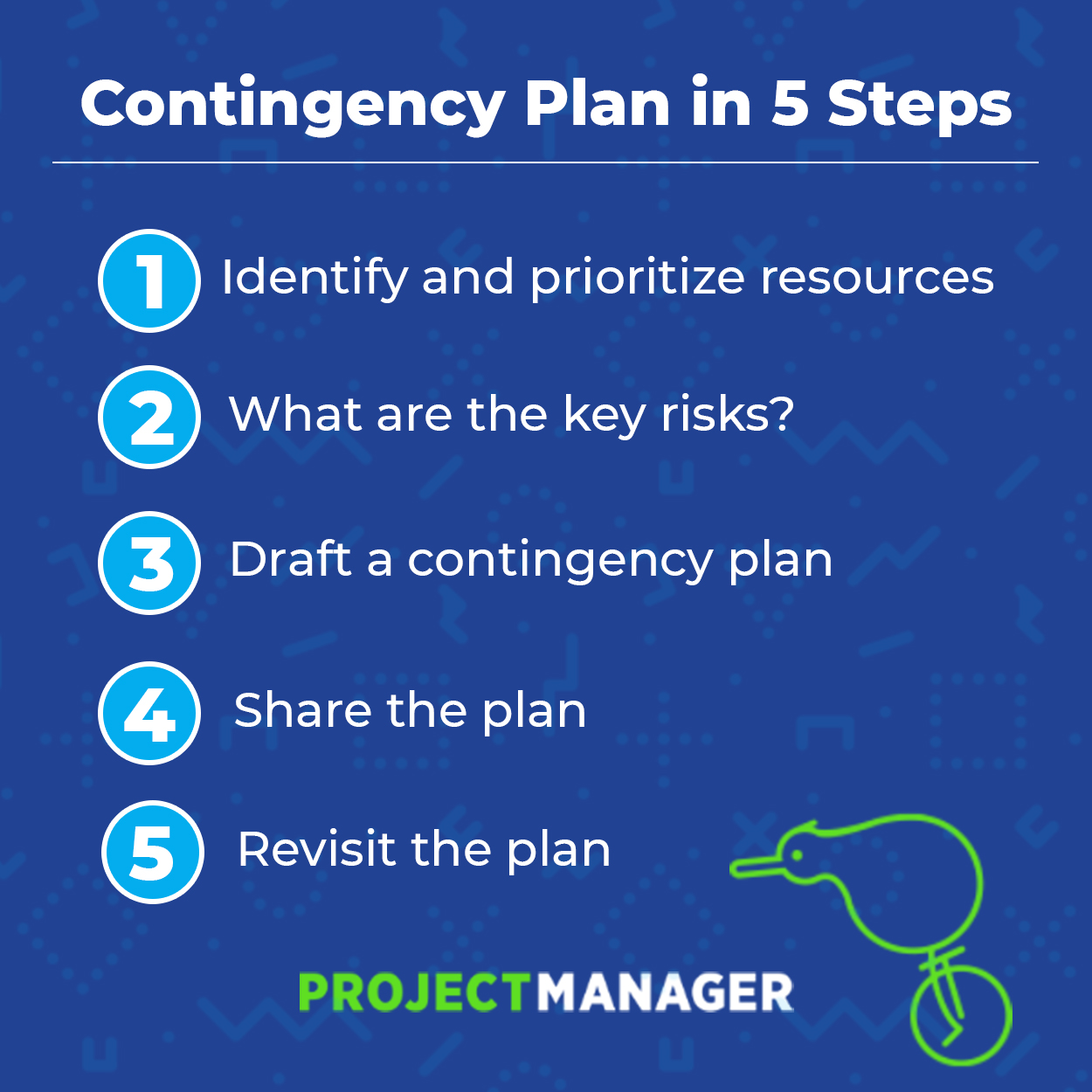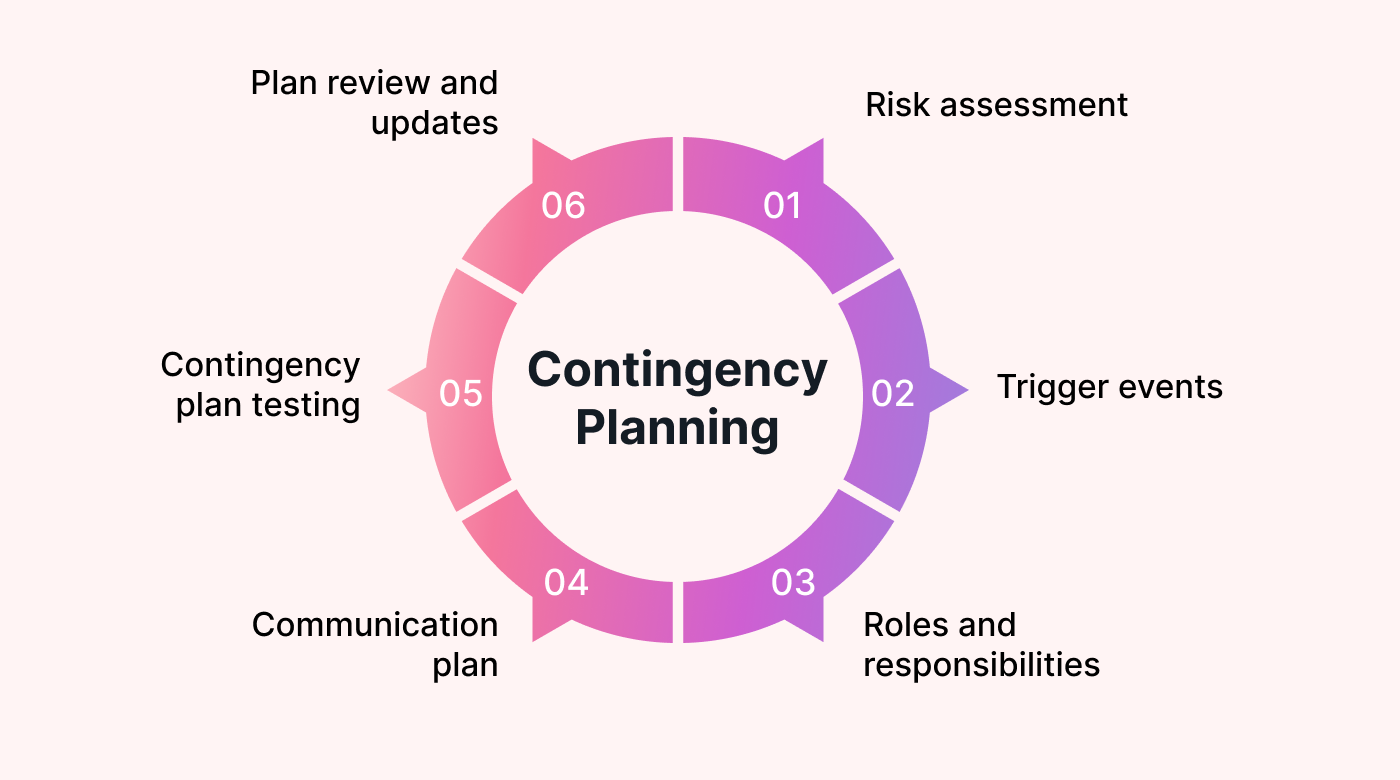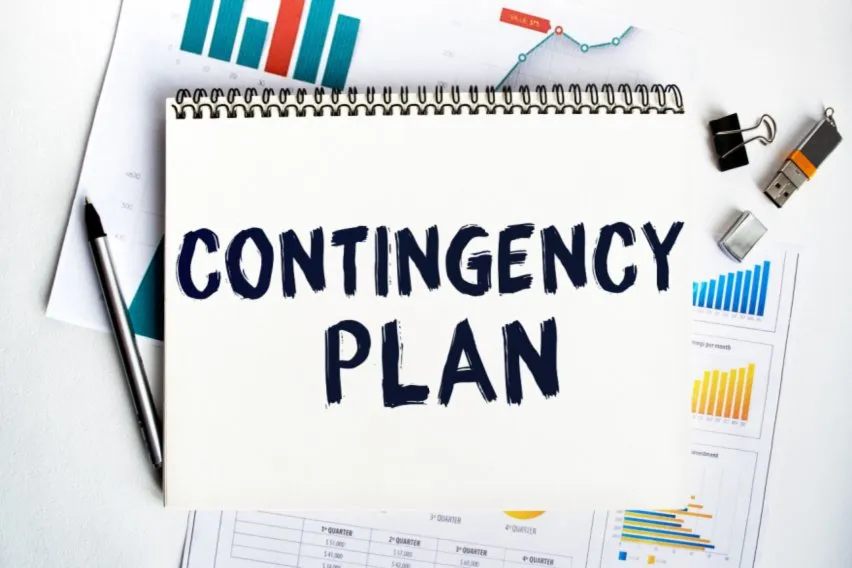Contingency HF Twitter - Preparing For The Unforeseen
Life, you know, has a way of throwing curveballs, and the fast-moving world of high-frequency trading and social media chatter is no different. We often talk about things that are sure to happen, but what about the stuff that might, just might, pop up out of nowhere? It's about those moments when something unexpected could happen, something that could change how things are going, or even bring about a bit of a tricky spot. This idea of something possibly happening in the future, especially if it brings problems or needs more thought, is what we call a "contingency." It's a big part of how we think about what's coming next.
Consider for a moment how quick things move on platforms like Twitter, especially when big money is on the line. News, rumors, or even just a sudden shift in feeling can spread like wildfire, shaping how people act and what they believe. In this very quick setting, where every second counts, a "contingency" isn't just a fancy word; it's a real part of daily operations. It describes an event or a situation that might show up later, but you can't really tell if it will or won't. It's about that element of chance, that feeling that something could happen, and you need to be ready for it, just in case.
So, we are going to look closely at what it means to face these uncertain moments, particularly when it comes to the speedy reactions of high-frequency trading and the quick information flow on Twitter. It's about recognizing that some things are just not set in stone, that there's a chance something will happen, and that being ready for these possibilities is a pretty smart move. We will talk about how this idea of something not being certain plays a part in thinking ahead and making choices when things move so fast, you know?
- John Marshall Joan Van Ark
- Who Married Clint Black
- Is Pumpkin Pregnant
- Cynthia Erivo Hair Loss
- Gwendoline Christie And Giles Deacon
Table of Contents
- What Do We Mean by Contingency?
- How Do Unexpected Events Shape Contingency HF Twitter?
- Is Chance a Big Part of Contingency HF Twitter?
- Thinking About Possibilities for Contingency HF Twitter
What Do We Mean by Contingency?
When we talk about a "contingency," we are really talking about something that might, or might not, happen in the future. It's not a sure thing, you see. It could be an event or a situation that pops up later, but we can't say for certain if it will come to pass. Think of it like this: you're planning a picnic, but there's a chance of rain. That rain, which might or might not happen, is a sort of contingency. It's a future event that is possible, but nobody can predict it with perfect accuracy. It's about that feeling of things being up in the air, that possibility that something could change the picture. It's just a little bit about what could be, rather than what absolutely will be.
The very idea of a contingency often brings with it the thought of things that could cause problems or make further steps necessary. It's not always about bad news, but it does mean that we need to be prepared for what might come next. For example, if you're building something, you might set aside extra materials just in case a piece breaks. That extra material is there for a contingency – something that might happen but isn't certain. It describes something that might show up later, an event or a situation that is a bit uncertain. We use this word to point to something that is dependent on chance, or on another condition being met. It’s a very practical way to think about the unknown, you know.
So, a contingency is an event you can't be sure will happen or not. It’s that future happening that might or might not occur. The fact that events are not certain is pretty much what this word is all about. It's like saying, "We must think about all the things that could possibly happen." This idea of things not being certain is a big part of being human, actually. We live with the idea that tomorrow isn't fully written, that there are things that could come up that we haven't planned for. It’s about that condition of being dependent on chance, which is something we all deal with, more or less.
How Do Unexpected Events Shape Contingency HF Twitter?
Now, let's bring this idea of things that might happen into the quick world of high-frequency trading and the constant flow of information on Twitter. When we talk about "contingency HF Twitter," we are thinking about how those uncertain future events, the ones that could cause problems, play out in a place where decisions are made in tiny fractions of a second. Imagine a piece of news breaking on Twitter that sends shockwaves through the market. That sudden piece of information, perhaps a rumor or an unexpected statement, is a kind of contingency. It's something that might happen, and it has the potential to really shake things up for those who trade very quickly. It's about how those quick-moving systems deal with things they didn't see coming, you know?
What Does 'Contingency' Mean for Contingency HF Twitter?
For high-frequency trading firms, a contingency on Twitter could be anything from a major news outlet breaking a story that affects a stock, to a widely followed financial influencer tweeting something controversial, or even a technical glitch that causes misinformation to spread. These are all things that might possibly happen in the future, and they usually cause problems or make further steps necessary for traders. The very quick nature of Twitter means that these events can appear and spread before anyone has a chance to fully think them through. It’s about the dependence on chance, or on a condition being met, like a tweet going viral. This means that the people working with "contingency HF Twitter" need to be ready for anything, almost, because things can change so quickly.
The noun "contingency" describes something that might or might not happen. In the context of high-frequency trading and Twitter, this means acknowledging that the market, and the information that drives it, is full of these uncertain possibilities. It's not just about planning for what you expect, but also for what you don't. An event that may or may not happen, like a sudden market correction triggered by social media sentiment, is a perfect example. It's about how these quick-moving systems handle the unexpected, the things that are not certain. This is a very real part of how these operations think about risk and being ready for what's next, too it's almost.
Getting Ready for What Might Happen with Contingency HF Twitter
Being prepared for a contingency means having a plan for those "what if" moments. In the world of "contingency HF Twitter," this could involve having systems in place that can quickly identify and react to unusual activity on social media, or having backup plans if a sudden piece of news causes a trading system to falter. It's about making sure that if something unexpected does occur, the impact is as small as possible. This means thinking about possibilities that must be prepared for, rather than just hoping they don't happen. It’s about how you respond when something you weren't sure about actually shows up. This kind of preparation is a big part of staying ahead when things move so fast, you know.
The idea of "contingency" also touches on the fact that events are not certain. We must consider all possible contingencies, especially when dealing with something as immediate and influential as Twitter in financial markets. This means that high-frequency traders and their teams are constantly thinking about the various ways things could go wrong, or simply go in an unexpected direction, due to information spreading online. It's a continuous process of trying to predict the unpredictable, and building systems that can adapt. This constant state of readiness for things that are not certain is a defining feature of working with "contingency HF Twitter," in a way.
Is Chance a Big Part of Contingency HF Twitter?
Absolutely, chance plays a rather big role when we talk about "contingency HF Twitter." The very definition of a contingency involves something that is dependent on chance or on the fulfillment of a condition. In the fast-paced world of high-frequency trading, where algorithms make decisions in milliseconds, the influence of chance events on Twitter can be quite significant. A random tweet from a prominent figure, an unexpected data release, or even a technical glitch on the platform itself can introduce an element of chance that alters market dynamics. It's about those moments where you can't be sure if something will happen or not, and yet, its occurrence could have real consequences. This makes the concept of being ready for the uncertain very important, you see.
The "contingency of life" is part of the human condition, and this applies just as much to the digital interactions on Twitter and their impact on financial markets. We are always dealing with the possibility that something might happen, something that isn't likely or intended, but still possible. For instance, a sudden, unexpected outage on Twitter could prevent critical information from reaching trading systems, creating a significant contingency. It's about recognizing that not everything can be controlled or predicted, and that a certain degree of uncertainty is always present. This constant awareness of what might happen, even if it's a bit of a long shot, shapes how systems are built and how decisions are made in the "contingency HF Twitter" space.
Thinking About Possibilities for Contingency HF Twitter
Thinking about possibilities for "contingency HF Twitter" means constantly asking "what if?" It's about looking at all the different ways an event or situation might happen in the future, especially those that could cause problems. For example, what if a major news event breaks on Twitter that contradicts existing market data? What if a coordinated social media campaign targets a specific stock? These are all potential future events that cannot be predicted with certainty, but they certainly need to be considered. It's about understanding that the information flowing through Twitter is a powerful, yet somewhat unpredictable, force that can influence market movements. This means being ready for a wide range of things that might happen, you know.
Insurers, for example, base their premium rates and their willingness to accept risks partly on their assessment of contingencies. They look at what might happen and how likely it is. Similarly, in the world of "contingency HF Twitter," those who operate in this space must constantly assess the likelihood and potential impact of various unexpected events. This involves building models that try to account for the unpredictable nature of social media sentiment and news dissemination. It's about thinking through all the possible things that could go wrong, or simply change, because of something happening on Twitter. This approach helps them prepare for what might come, even if it's just a possibility, so.
What if Things Go Wrong for Contingency HF Twitter?
When we consider "what if things go wrong for contingency HF Twitter," we are essentially preparing for the downside of those uncertain future events. A contingency is an event or situation that might happen in the future, especially one that could cause problems. For high-frequency trading, a problem could be anything from a sudden, sharp price movement caused by a false rumor on Twitter, to a system malfunction triggered by an unexpected data format from a tweet. It's about having plans in place to limit the damage if one of these possibilities actually occurs. This means having backup systems, quick communication channels, and clear decision-making processes ready to go. It’s about how you deal with the things that are not certain when they actually happen, in some respects.
The fact that events are not certain means that there's always a possibility of something going wrong. We must consider all possible contingencies, even the unlikely ones. For "contingency HF Twitter," this means thinking about scenarios where Twitter data becomes unreliable, or where a tweet triggers an unintended automated trading response. It’s about having a way to quickly identify and respond to these issues, rather than being caught off guard. This constant readiness for things that might go wrong is a core part of operating in such a fast-paced and interconnected environment. It’s a very practical way to approach the unpredictable nature of the market and social media, nearly.
How Does Being Ready Help with Contingency HF Twitter?
Being ready helps with "contingency HF Twitter" by allowing for quick and effective responses when the unexpected happens. A contingency refers to a future event or circumstance that is possible but cannot be predicted with certainty. By having plans for these possibilities, firms can reduce the time it takes to react and recover. This could mean having automated systems that pause trading if unusual Twitter activity is detected, or having human teams ready to step in and make manual adjustments. It's about turning potential problems into manageable situations, because you've thought about them beforehand. This preparation helps to keep things running smoothly, even when things are a bit chaotic, you know.
The condition of being dependent on chance means that some things are simply out of our direct control. However, being ready for those chance events can make a big difference. For "contingency HF Twitter," this means not just waiting for problems to appear, but actively thinking about what might happen and how to respond. It’s about building a sort of resilience into the operations, so that even if an event that may occur but is not likely or intended does happen, the impact is lessened. This proactive approach to uncertainty is a significant part of managing risk in the quick-moving world of high-frequency trading and its interaction with social media. It's about being prepared for a possibility that must be prepared for, quite simply.
This discussion has explored the meaning of contingency as a possible future event, often causing problems, and how it relates to being dependent on chance. We looked at how this idea of uncertain events plays out in the fast-paced world of high-frequency trading and Twitter, where quick reactions are key. We talked about how something that might or might not happen needs to be considered, and how being ready for these possibilities, even if they are just possibilities, can make a real difference. It’s all about thinking ahead for what could be, and having a plan for it.
- Sebastian Stan Jennifer Morrison
- Matthew Mcconaughey Dog
- Cheryl Tiegs Fishnet Suit
- Conner Barba
- Usher And Ex

How to Make a Contingency Plan - ProjectManager.com

What is a Contingency Plan? And Why Your Project Needs It | Motion | Motion

Contingency Plan: What It Is and Why Do You Need It?